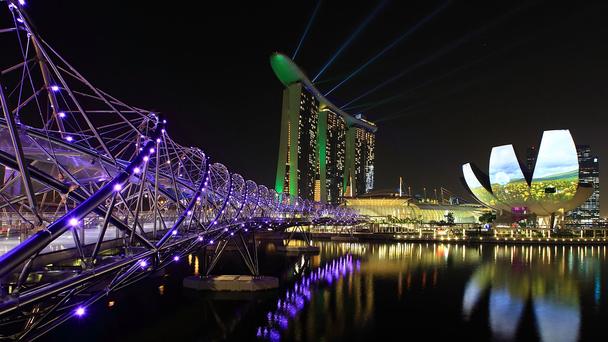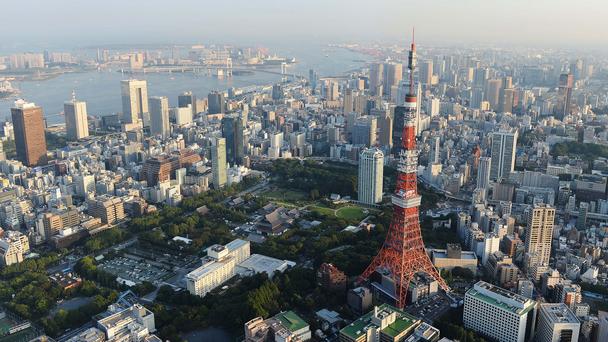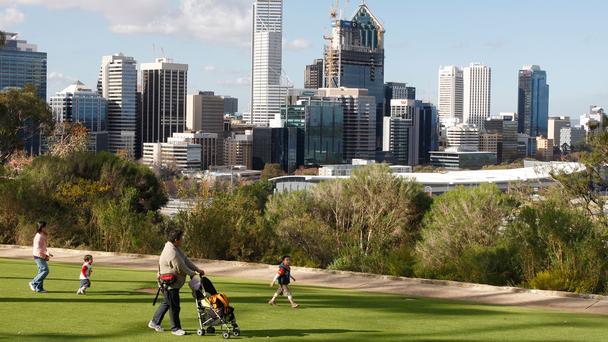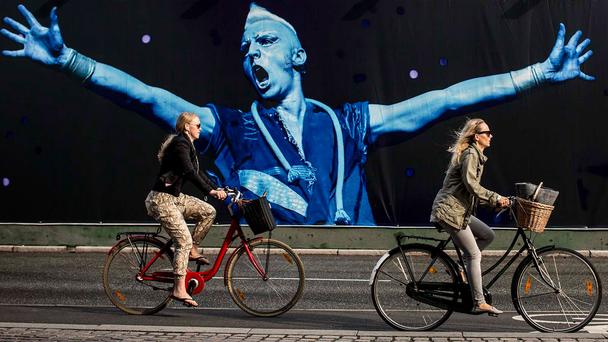What makes a city healthy? A combination of factors, ranging from readily available healthcare to excellent mass transit to a commitment to improving access to green spaces. Taken from a number of lists in publications such as The Guardian and The Economist that rank the healthiest cities and countries around the world, these five cities have a history of investing in the behaviours and elements that ensure their citizens live as healthy a life as possible.
Singapore

Singaporeans experience both some of the world’s lowest infant mortality rates and the highest life expectancies: 84.07 years, number four in the world according to the CIA World Factbook. Ranked among the most efficient health care systems across the globe, up to 80% of residents use the public health system, which has a few different pricing tiers. Overall, Singapore is one of the world’s cleanest cities (strict laws forbid everything from spitting to littering), and the government has successfully used incentives, pricing and congestion charging to reduce the amount of car traffic from its high point in the 1970s. The city’s comprehensive mass transit system, SMRT, carries more than two million passengers every day. Calling itself the Garden City, there are dozens of parks, gardens and mountain trails around the island. For cyclists, runners and walkers, the Park Connector Network comprises more than 200km of paths linking local parks and green spaces. “There is a growing emphasis on work/life balance here, as well as a plethora of sporting events like marathons and mass cycling rides,” said Carole Ann Coventry, director of Coventry & Seah estate agency.
Many expats and internationals rent in Singapore because of the restrictions on foreigners purchasing property, and the government has put further measures in place, such as additional taxes, to prevent a housing bubble. Many people want to live in the central districts near Orchard Road, north of the Singapore River from the Central Business District. “Riverside living on Robertson Quay is popular with couples and young families,” Coventry said. These areas are close to public transport, including multiple MRT stations. Singapore’s East Coast neighbourhoods near East Coast Park are popular because of their proximity to outdoor activities such as the beach, bike trails and volleyball courts. The average rent for a two-bedroom property near Orchard Road is around $5,000 to $6,000 Singapore dollars a month.
Tokyo

With one of the most efficient transit systems in the world, moving approximately three million people a day in the greater metropolitan area, Tokyo’s greenhouse gas emissions are lower than most other Asian cities. According to the World Bank, Tokyo’s CO2 per capita output is 4.89 tons, while Beijing’s is 10.8 tons and Singapore’s is 7.86 tons. In the wake of the 2011 tsunami, the Fukushima reactor disaster has caused concerns, but the government claims radiation levels are safe.
From our partners:
Ranked by the Guardian in 2012 as the second healthiest city in the world, life expectancy in the Japanese capital is one of the highest at 84.19 years. This is due to a number of factors, including investment in public health, strong family and community ties, the Japanese tradition of hygiene, and a common diet of rice, fresh fish and vegetables. Universal health insurance was also implemented in 1961, which cut down on the rate of childhood and infectious diseases.
Tokyo’s property market and prices have been on the rise in 2013, spurred by the new prime minister’s economic policies, as well as the city’s successful bid for the Summer Olympics in 2020. Foreigners are not restricted from buying property, but most expats choose to rent. Many look to live in the fashionable Azabu, Hiroo and Roppongi neighbourhoods in the Minato ward, trendy Omotesando in the Shibuya ward and leafy Daikanyama and Nakameguro – known for its cherry blossoms – in the Meguro ward, some of which have a more residential feel than is typical in the rest of Tokyo. Average rents for three-bedroom apartments in these areas run anywhere from 200,000 to 450,000 yen a month. The average price of a new condominium in Tokyo is 686,000 yen per square metre, while the average price of an existing condo is 399,700 per square metre.
Perth

Ranked in the top 10 for the Economist Intelligence Unit’s most liveable cities in 2013, Perth is also one of Australia’s healthiest cities for women. The EIU ranking is based on five criteria: stability, healthcare, education, infrastructure and culture and environment. And according to the magazine Australian Women’s Health, Perth is near the top of the list for healthy eating, mental wellbeing, life satisfaction and medical health. Between 1998 and 2009, the number of cyclists in Perth increased by 450%, and Transperth, the city transit system, has installed bike shelters at many stations, so commuters who cycle to the train can lock up their wheels. The warm climate and nearby Indian Ocean beaches mean residents have access to many outdoor and sporting activities, and in October 2013, government health agencies launched the Public Open Space Tool to enable Perth residents to locate parks and facilities near them. “There is a culture of outdoor sport and activity here,” said Gemma Alexander, associate director of research for Savills Australia and New Zealand.
The property market in Perth, which boomed in recent years due to the mining industry, is currently stabilising. West of the city’s Central Business District are some of the most desirable areas. The beach-side suburb of Cottesloe has beautiful sea views and easygoing charm, while just inland are the affluent suburbs of Peppermint Grove and Dalkeith along the Swan River, popular for their proximity to top schools and the downtown core. About 20km to the north, the beach town of Hillarys is more affordable than other coastal suburbs and very family friendly, while the historic port of Fremantle has a laidback vibe. “Fremantle has many independent stores and restaurants, plus a large range of housing options,” Alexander said. The average cost of a two-bedroom property in Peppermint Grove is $1.36 million Australian dollars, while the average rent is A$665 a week. In Cottesloe the average cost is A$815,000 and the rent is A$690 a week. In Hillarys and Freemantle, the average cost runs from A$600,000 and A$650,000, while the average rent is A$550 and A$570 a week respectively.
Copenhagen

The Danish capital tops many global health lists for its cycling culture and big drop in CO2 emissions over the last decade. Greenhouse gas emissions are down 20% since 2005, part of the government’s plan for the city to be the first carbon-neutral capital in the world by 2025. Every day 50% of Copenhageners commute to work or school by bike, and there are nearly 400km of bike lanes across the city. The lane that crosses the Dronning Louises Bridge, connecting the lively Nørrebro neighbourhood to the city centre, is the busiest bike lane in the world, with 36,000 cyclists using it daily. Also heavily used is the Lange Bridge across the Inner Harbour. “It is crowded with bicycles, as is the bridge that connects the island of Amager to the centre,” said Torben Andersen, CEO of RobinHus estate agents. In the Islands Brygge area of Amager along the harbour front, the curving Gemini Residence is a former silo converted into apartment buildings. A bicycle and pedestrian bridge has also been built across the harbour, connecting the area with the residential district of Fisketorvet.
Located just north and south respectively of Copenhagen’s centre, the Nørrebro and Amagerbro neighbourhoods are popular for their vibrant streets and multicultural scene. Prices have risen steadily since 2009, and the average cost of a two-bed property in these areas is around 1.3 million Danish krone. “Rent regulations differ between newly constructed or refurbished buildings and older buildings,” Andersen said. The yearly rent for an apartment in an older building averages 60,000 DKK, while one in a renovated building will set you back around 100,000 DKK a year.
Monaco

Monaco is a small principality on the French Riviera around 15km east of Nice. Just 2 sq-km in area, it is the most densely populated country in the world and has the highest life expectancy of 89.6 years. It also has the world’s highest concentration of millionaires and billionaires per capita. The great wealth concentrated in this city-state means citizens can afford top health care, ranked 13th in the world in 2000 by the World Health Organization. The Prince Albert II of Monaco Foundation has launched a number of green initiatives, including carbon offsets for conferences held at Monaco hotels, and local government agencies use a fleet of electric smart cars.
Monaco is divided into four quarters: historic Monaco-Ville, glamorous Monte Carlo, portside La Condamine and the new district Fontvieille. Monaco-Ville is the old city, known as the Rock, the town’s ancient heart that contains the Prince’s Palace, home to the Grimaldi ruling family and the Cathédrale de Monaco. Across the port, Monte Carlo is where the famous casino is located, along with many residential apartment buildings and grand hotels. South of the Rock, Fontvieille is the newest part of town, built on land reclaimed from the sea and home to Louis II Stadium, where the AS Monaco Football Club plays, and the Monaco Heliport. “For many, Monte Carlo is the only location they will consider,” said Fred Schiff, Knight Frank Monaco. “It is central and the most glamorous area.” But Fontvieille is becoming increasingly sought after for its quieter, village-like feel.
Much of Monaco’s housing stock is made up of multiple-unit residences and apartment blocks that range in style from Belle Époque to modern. Land is at a premium in this tiny country, where the majority of the buyers are Monegasque and French, as well as Brits, Italians, Belgians, Dutch and Swiss. The Fontvielle area was built on land reclaimed in the 1960s, and bids are being considered for an additional reclamation project in a different part of the city. In addition, new builds are very desirable, such as L’Oiseau Bleu, an apartment building in La Condamine, and the controversial Tour Odeon, a 50-storey residential building, one of the tallest in Europe, which opponents say will cast large shadows over the neighbouring areas. Properties in these prime areas cost between 35,000 and 40,000 euros per square metre, while prices at the Tour Odeon (due to be completed July 2014) are now hovering around 70,000 euros per square metre.
This feature originally appeared in BBC.

















